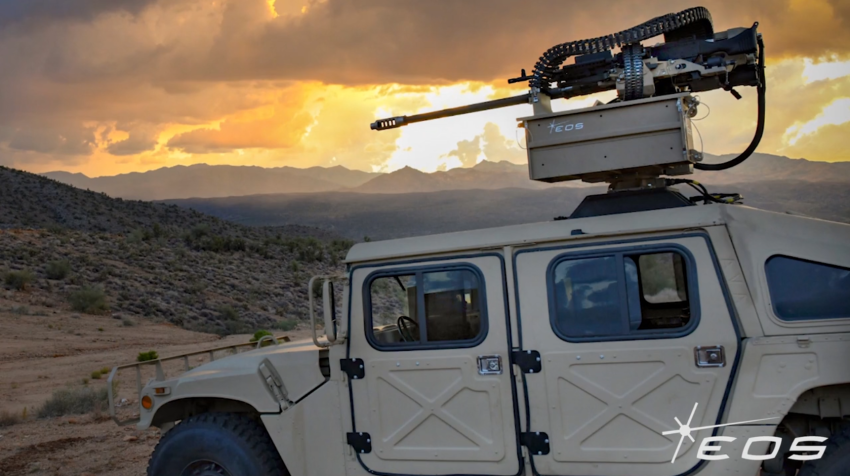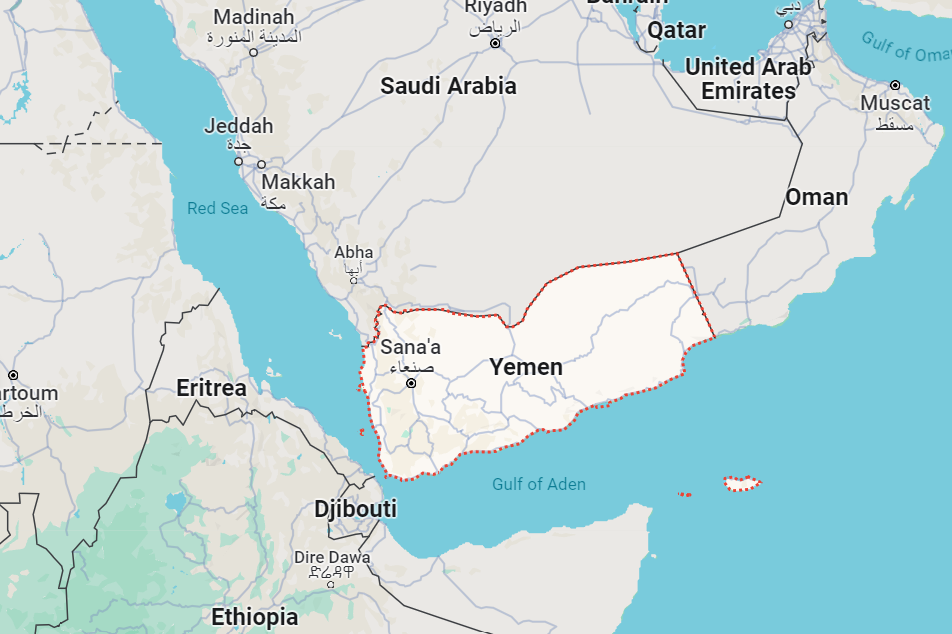
A Human Rights Watch (HRW) report, from August, on the mass killing of hundreds, even thousands, of unarmed migrants and asylum seekers by Saudi Arabia at the Yemen-Saudi border, raises questions about the potential use of Australian-supplied weaponry.
Yemen, on the southern border of Saudi Arabia, is in a nine-year civil war between the Saudis and the Ansar Allah (“Houthi”) government.
Strategically, the nation sits at the entrance to the Bab-el-Mandeb Strait, which links the Red Sea to the Indian Ocean via the Gulf of Aden, a global shipping lane carrying an estimated US$1 trillion in goods annually.
yemen.png

The Houthi government is trying to impose a blockade on any country continuing to supply Israel with weapons, as part of its stand against genocide and to show solidarity with Palestine.
In response, the United States and Britain, with Australian government support, have escalated their retaliatory attacks.
The majority of migrants and asylum seekers using the “Yemeni Route” to get to Saudi Arabia are Ethiopians, fleeing serious human rights abuses, with the proportion of women and girls increasing.
It is a dangerous journey populated by Houthi rebels; organised crime gangs trafficking girls, drugs and human organs; and people smugglers.
It’s also an arms traders’ paradise, with the multi-trillion dollar global defence contracting arms industry the biggest gunrunners of all.
Australian arms exports to Saudi Arabia and the United Arab Emirates form part of this mix.
Freedom of Information figures obtained by Green Left show that in the eight and a half years from July 1, 2015, to January 29 this year, the Department of Defence approved 131 export permits to Saudi Arabia and 257 to the UAE — 388 in total.
No export applications for the UAE were denied in that period, while five were denied to Saudi Arabia (two in 2019–20 and three in 2020–21).
In Australia, almost all details of weapons exports are kept hidden by the federal government, which is regularly accused by Greens Senator David Shoebridge and independent media of playing semantics on defence accountability and end-use compliance.
The ethics of supplying Australian arms to Saudi Arabia is again in the spotlight after HRW uncovered evidence that migrants and asylum-seekers had been killed at the Yemen-Saudi border — allegedly by Saudi officers.
Human Rights Watch demands investigation
HRW reported last August that Saudi border guards had killed “at least hundreds” of Ethiopian migrants and asylum seekers trying to cross the Yemen-Saudi border in the 15 months between March 2022 and June 2023.
The report titled “They Fired On Us Like Rain” Saudi Arabian Mass Killings of Ethiopian Migrants at the Yemen-Saudi Border describes sickening torture, murder and armed violence against unarmed civilians using a variety of weapons.
“Saudi officials are killing hundreds of women and children out of view of the rest of the world while they spend billions on sports-washing to try to improve their image.”
It adds: “If committed as part of a Saudi government policy to murder migrants, these killings, which appear to continue, would be a crime against humanity.”
The report notes a concerning escalation in migrant and asylum seeker killings: “While Human Rights Watch has documented killings … at the border with Yemen and Saudi Arabia since 2014, [these] killings appear to be a deliberate escalation in both the number and manner of targeted killings.”
HRW said “concerned countries should press for accountability and the UN should investigate”. Australia has good reason for concern.
Australian involvement?
The detailed report contains satellite images of a Saudi border guard post with what HRW says may be a Mine-Resistant Ambush Protected vehicle parked nearby.
The vehicle was seen in the imagery from October 10, 2021, to December 31, 2022. The report notes the vehicle “appeared to have a heavy machine gun mounted in a turret on its roof”.
Survivors interviewed by HRW described 28 separate incidents in which groups of migrants were attacked by mortar projectiles and other explosive weapons. One survivor recounted that some people could not be identified “because their bodies are thrown everywhere”, while other people “were torn in half”.
Australian weapons manufacturer Electro Optic Systems (EOS) was awarded a contract in early 2019 by Saudi Arabia to supply it with 500 remote weapons systems.
It was a significant contract.
The Saudi Kingdom, known for its human rights abuses — including the October 2018 murder and dismemberment of dissident journalist Jamal Khashoggi — ordered twice as many EOS high-tech systems as the Australian Defence Force.
The EOS remote weapons system enables a roof-mounted heavy machine gun, grenade or missile launcher, small cannon or combination of these to be operated from inside the vehicle by the user. The company says its remote weapons systems significantly increase precision and lethality”. (See the weapon in action here.)
EOS started exporting its weapons systems to Saudi Arabia in mid-2019. According to Dr Ben Greene, then CEO of EOS, the equipment was being supplied for US programs to support the Saudi Ministry of Interior for its border operations.
The timing of the EOS exports coincided with the Saudi Ministry of Interior's 2019 deployment of a new security force, the al-Afwaj Regiment, to support Saudi border guards.
Eleonora Ardemagni, an associate research fellow at the Italian Institute for International Political Studies and an expert on Yemen, the Gulf monarchies and Arab military forces, wrote about the creation of the al-Afwaj Regiment.
In a 2020 report she describes the militarisation of the Saudi-Yemeni borderland: “This regiment is tasked with preventing smuggling, trafficking and infiltrators. Two years prior, a Green Berets team of the US Special Forces arrived in Saudi Arabia to train Saudi ground troops responsible for securing the border. Meanwhile, US intelligence analysts are cooperating with the Saudis in Najran to locate Houthis’ missile sites in Yemen.”
The delivery of the EOS weapons systems into this location at this time raises serious questions about whether any of this equipment may have been used in the atrocities HRW has documented.
The Department of Defence did not respond to questions from Green Left. Dr Andreas Schwer, chief executive of EOS, also failed to respond.
A spokesperson from the Department of Foreign Affairs and Trade did say: “The Australian Government is concerned by the reports of violence against Ethiopian migrants crossing the Saudi-Yemen border in a HRW report released in August 2023.
“Australian officials raised this report directly with the Saudi Government and with the Saudi Human Rights Commission, emphasising Australia’s commitment to international humanitarian law.”
In calling for a UN investigation into the Yemen-Saudi borderland atrocities, the HRW report concluded: “If there is no justice for what appear to be serious crimes against Ethiopian migrants and asylum seekers, it will only fuel further killings and abuses.”
As concerns grow about Australian weapons exports, it would be appropriate for an urgent and transparent investigation, with the results reported to parliament.
[Suzanne James has a background in writing policy, governance, risk management and regulatory compliance frameworks. Michelle Fahy is an independent writer and researcher, specialising in the connections between the weapons industry and government.]